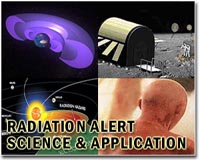 |
Miyako, Japan (AFP) March 19, 2011 The nuclear crisis in Japan has struck fear and disbelief into quake and tsunami survivors who can barely take in the idea that a third life-threatening disaster might come their way. Frantic efforts to prevent a dangerous radiation leak at the crippled Fukushima nuclear plant on the eastern coast have dominated global concerns in the wake of the massive earthquake and ensuing tsunami last week. On Friday, Japan's nuclear agency hiked the accident level to five from four on the international 0-7 scale of gravity for atomic accidents, an admission the crisis had at least equalled the US Three Mile Island accident in 1979. Some 200 kilometres (125 miles) to the north, those who lived through the quake and subsequent tsunami that left nearly 7,000 confirmed dead have struggled to make sense of the news coming out of the Fukushima plant. Traumatised, homeless and facing the daunting task of rebuilding their shattered lives, few have been reassured by the official line that the situation is under control and that any leak would be so small as to carry a negligible health risk. "That radiation thing is extremely scary," said Hiromitsu Miyakawa, a shopkeeper in Kesennuma, one of the towns that bore the full force of the tsunami along the northeast coast. "It is beyond a tsunami. A tsunami you can see. But this you cannot see," Miyakawa said. Helicopters and fire trucks have been used to dump tonnes of water in a desperate effort to bring overheating at the plant's reactors and fuel storage tanks, known as containment pools, under control. Japan has said radiation levels from the plant, located 250 kilometres (155 miles) northeast of Tokyo, pose no health threat outside a 20-kilometre exclusion zone. In the small northeastern port of Miyako, Teeichi Sagama, the principal of a school converted into a tsunami evacuation centre, said he was frustrated with what he saw as the confusing and contradictory statements coming from the authorities. "I just want the government to tell the truth," he said. Taizo Tanisawa, who lost his home but volunteered to distribute hot water and food to other survivors in Miyako, agreed that the government had been unclear in explaining the dangers of the situation in Fukushina. "We're worried and don't know whether or not we should move away from here. I would like to have answers from the government but they are not giving them," Tanisawa said. For Ayako Ito who, at 84, is old enough to recall the dropping of the US atomic bombs on the Japanese cities of Hiroshima and Nagasaki in World War II, the threat of a nuclear disaster carries particular resonance. "The most difficult part is that you can't see it but people can just disappear like that," she said. "We're already not eating or drinking and now this is happening to us? It's very difficult," she said. A little further south, in the town of Rikuzentakata, which was wiped out by the tsunami, Shiori Hosoya had an equally cynical take on the official noises coming from Tokyo. "The government tells lies. They bring out all these experts to explain things but they're just old men who say whatever the government wants them to say," the 18-year-old said. "They're saying it's not going to be like Chernobyl, but it's really frightening." Compounding the sense of fear and mistrust is the fact that many of the reports being digested by survivors in the northeast are coming in second- or third-hand. The absence of electricity in the affected areas means little access to television news and newspapers are very hard to come by. So news is often spread by word of mouth and can get exaggerated in the process. The worst examples are chain emails being spread by mobile phone that report the release of an apocalyptic radiation cloud and warn people against exposure to toxic rain. Another suggests the government told the executives of top Japanese companies to leave the country and that deadly levels of radioactivity have already been reported in Tokyo. Tokyo Electric Power's track record of safety issues and attempts to cover them up has not helped to quell the rumours and conspiracy theories. In 2002, TEPCO admitted to falsifying safety reports which led to all 17 of its boiling-water reactors being shut down for inspection, including Fukushima. "People don't trust TEPCO, they don't expect TEPCO to tell the truth," said Philip White of Tokyo-based Citizens' Nuclear Information Center, a group of scientists and activists against nuclear power. "People are genuinely angry. But you can't expect the same level of prompt, open information in such a crisis as this," he said. "It's not an issue of covering things up. They actually don't know what is going on."
Share This Article With Planet Earth
Related Links Space Technology News - Applications and Research
 Measuring radioactivity, impact on health
Measuring radioactivity, impact on healthParis (AFP) March 18, 2011 Scientists use different units to measure radioactivity. Some terms quantify radiation emitted, others measure radiation absorbed by human tissue, and still others the potential impact on health. RADIATION PRIMER: There are two forms oF radiation, both of which are emitted when the nucleus of an atom has too many particles, too much energy or too much mass to remain stable and thus break ... read more |
|
| The content herein, unless otherwise known to be public domain, are Copyright 1995-2010 - SpaceDaily. AFP and UPI Wire Stories are copyright Agence France-Presse and United Press International. ESA Portal Reports are copyright European Space Agency. All NASA sourced material is public domain. Additional copyrights may apply in whole or part to other bona fide parties. Advertising does not imply endorsement,agreement or approval of any opinions, statements or information provided by SpaceDaily on any Web page published or hosted by SpaceDaily. Privacy Statement |